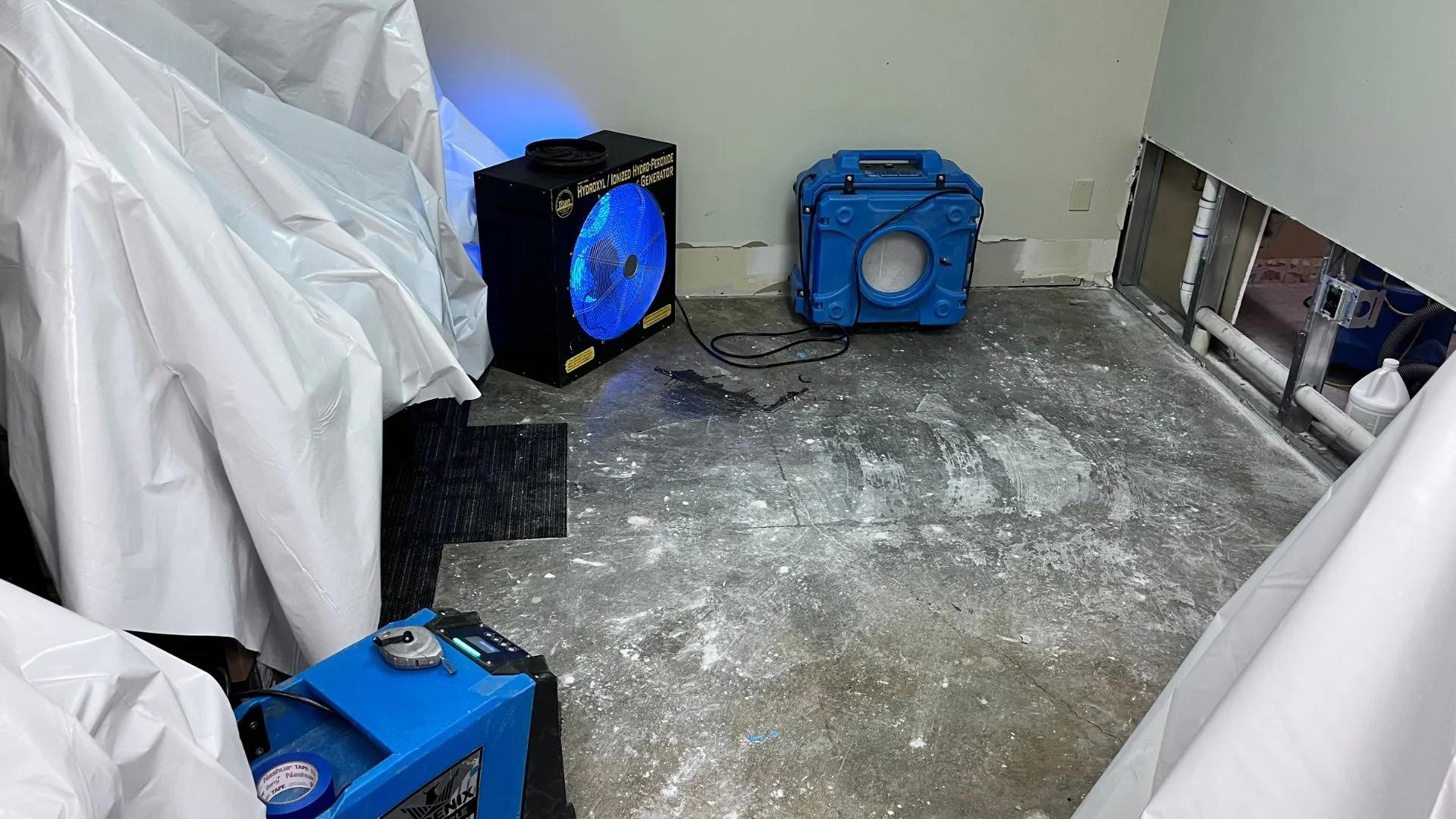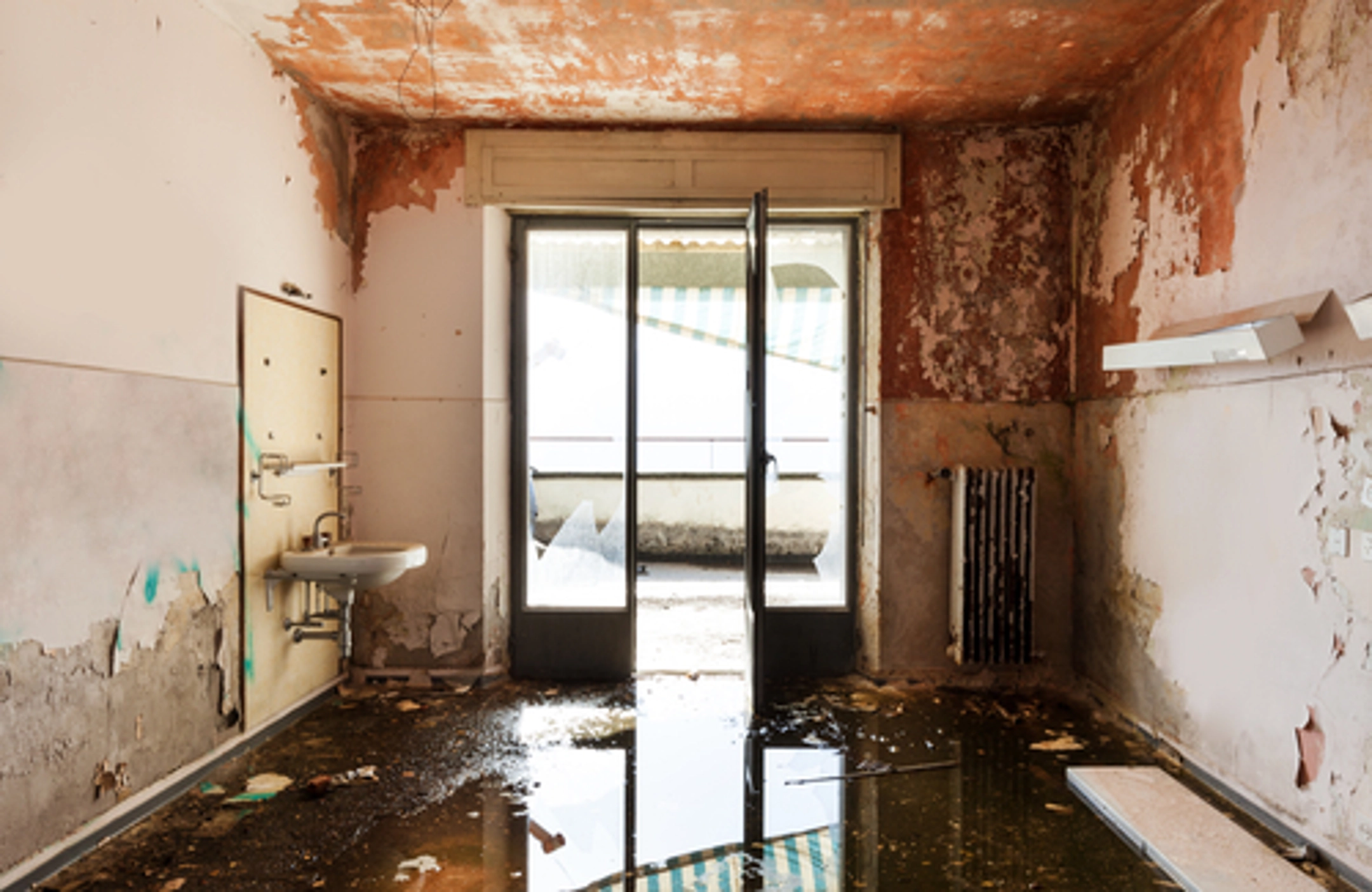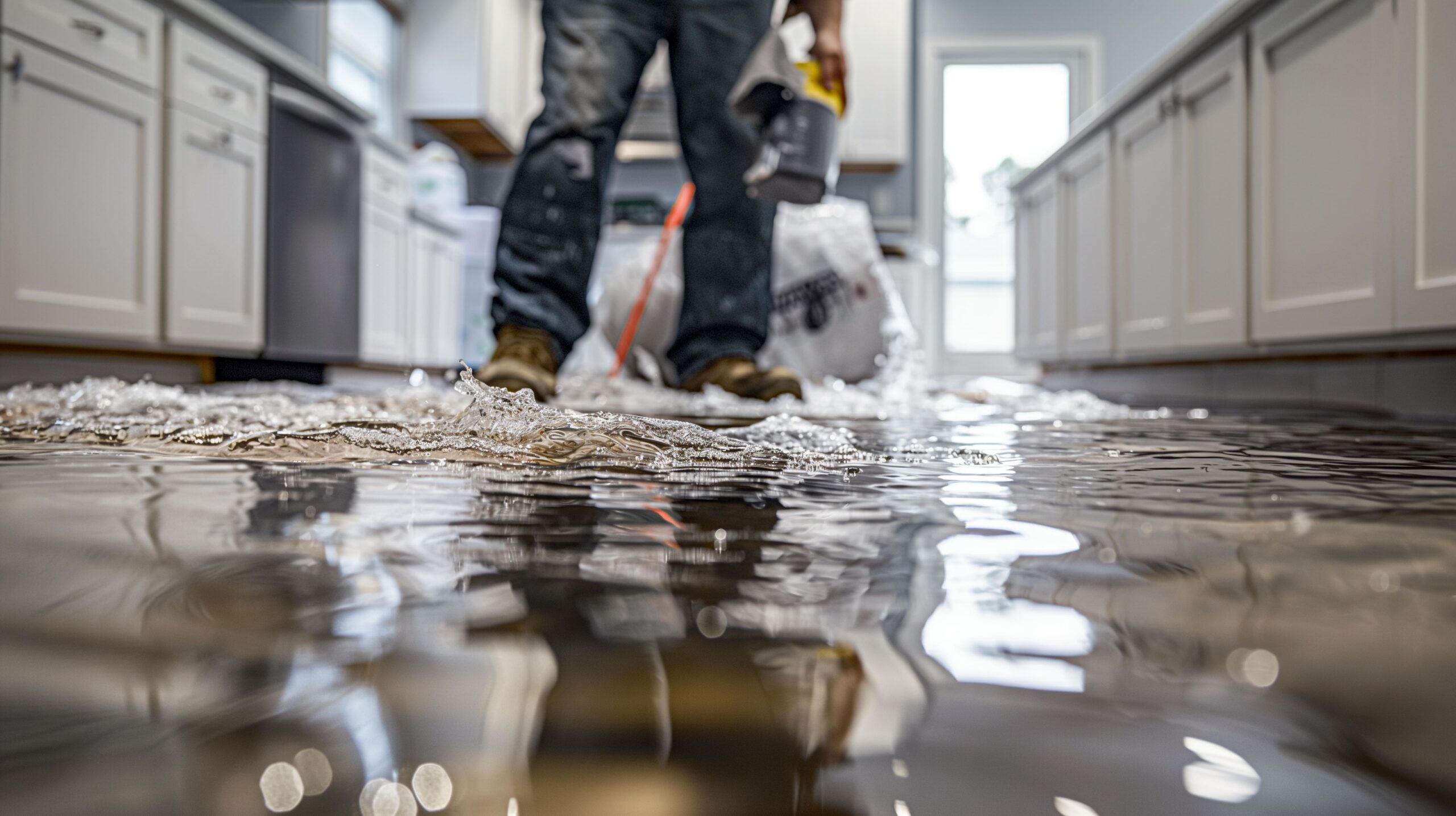Essential Actions to Comply With for Effective Water Damages Reconstruction in your house
When faced with water damage in your home, knowing the important steps for effective remediation can make all the distinction. You require to evaluate the damages and guarantee safety prior to taking on the problem. Stopping the resource of water is crucial, but it's just the beginning. Once you have actually taken care of that, there's a collection of actions you need to require to safeguard your residential or commercial property from further concerns. Allow's discover what you must do next.
Analyze the Damage
When you discover water damages in your home, the first action is to evaluate the damages thoroughly. Begin by recognizing the source of the water breach. Look for leaks, ruptured pipes, or various other concerns causing the issue. Next off, examine the affected areas for noticeable indicators of damage, including staining, bending, or mold and mildew development. Don't neglect to search in surprise places like behind walls or under flooring, as water can leak right into these locations unnoticed.Document the damages by taking clear photos and notes. When reviewing the circumstance with your insurance coverage service provider or reconstruction professionals, this will certainly aid you. Pay focus to the sort of products influenced, as various materials require different restoration approaches. Finally, evaluate the level of the damages. Is it extensive or minor? Recognizing the extent will direct you in choosing whether to handle it yourself or hire the experts for a much more extensive restoration process.

Ensure Security
Prior to you start any type of reconstruction work, guaranteeing your security is necessary. Initially, analyze the problem of your home. If the water's deep or if you discover electrical risks, don't go into the area. Turn off the electrical energy and gas supply to protect against accidents. Wear protective gear like handwear covers, masks, and boots to shield yourself from contaminants or mold.It's crucial to remain familiar with your environments; expect unsafe surface areas and sharp things. If the water is from a sewage back-up, treat it as contaminated materials. Maintain youngsters and pets far from influenced locations to stay clear of exposure.Once you have actually taken these precautions, you can proceed with the repair procedure. Bear in mind, your safety and security precedes, and if you're ever uncertain, it's finest to get in touch with a professional. Taking these steps will certainly assist guarantee you prepare to take on the repair safely and properly.
Quit the Source of Water
After guaranteeing your security, the following action is to quit the source of water. Recognize where the leak is coming from. Maybe a burst pipe, a malfunctioning home appliance, or perhaps heavy rain going into through a harmed roofing system. If it's a pipes problem, transform off the primary supply of water to your home to avoid additional flooding. For appliances, disconnect them and shut down their water valves.If the source is outdoors, like rainwater, attempt to divert it away from your home using sandbags or various other barriers. For small leaks, you could be able to utilize tape or a sealant temporarily until a professional can repair it. Keep in mind, dealing with the source rapidly is crucial to minimizing damages and stopping mold growth. As soon as you've stopped the water, you'll be in a better placement to proceed to the next steps in the reconstruction procedure.

Get Rid Of Excess Water
Act rapidly to get rid of excess water, as standing water can lead to a lot more considerable damages and mold and mildew development. Collect your tools: a wet/dry vacuum, buckets, and towels. You can make use of towels to saturate up the dampness if the water is shallow. For much deeper water, a wet/dry vacuum is your best choice. Ensure to empty the vacuum cleaner often to stay clear of overflow.If the water is contaminated, like from a sewage backup, put on protective equipment, consisting of masks and gloves, to maintain on your own secure. Once you've gotten rid of as much water as feasible, inspect for concealed pockets of wetness in corners and under furniture, as these can harbor mold.Don' t fail to remember to shut off electric appliances and power electrical outlets in wet areas to stop threats. This preliminary action is vital in reducing damages and setting the stage for a successful repair procedure.
Dry and Dehumidify the Location
It's essential to completely dry and evaporate the area completely once you have actually removed the excess water. Begin by utilizing dehumidifiers effectively to draw dampness out of the air and avoid mold and mildew growth. Watch on humidity degrees to assure the room dries totally.
Eliminate Standing Water
To properly take on water damages, you need to focus on removing standing water as rapidly as feasible. Beginning by collecting essential devices, like a wet/dry vacuum or a pump, depending upon the quantity of water. If the water is superficial, a vacuum cleaner must work. For bigger amounts, a pump is a lot more reliable. While functioning, make certain to put on safety equipment to maintain on your own secure from impurities. As you get rid of the water, focus on hidden areas like under furnishings or in corners where water might collect. Your area will certainly start to dry out as soon as you have actually removed the majority. This action is necessary, as sticking around water can lead to mold growth and much more considerable damages.
Use Dehumidifiers Properly
Exactly how can you properly utilize dehumidifiers to completely dry and dehumidify your space? Begin by positioning your dehumidifier in one of the most affected area, ideally where water damage is most extreme. See to it to close all doors and windows to produce a covered environment. Switch on the dehumidifier and established it to the appropriate moisture degree, typically around 30-50%. Empty the water collection tank regularly, or consider utilizing a design with a continual drain alternative for convenience. Ideally, make use of fans to boost air flow, helping the dehumidifier work extra successfully. Keep the dehumidifier running until you're positive that the location is thoroughly dried out, stopping mold and mildew development and additional useful site damages (Water Damage Repair). This action is essential for reliable water damage reconstruction
Monitor Humidity Degrees
Tracking moisture levels is crucial throughout the drying procedure, as it helps ensure your room remains devoid of excess dampness. Invest in a reliable hygrometer to track moisture accurately. Ideally, you intend to keep degrees between 30% and 50%. You might require to explanation change your fans or dehumidifiers to enhance air flow if humidity readings increase over this array. Examine the readings on a regular basis, specifically in locations susceptible to moisture, like cellars or washrooms. If you discover consistent high humidity, think about raising ventilation or using additional dehumidifiers. Staying on top of these levels not only speeds up the drying procedure yet additionally protects against mold and mildew growth, ensuring your home stays safe and comfy.
Clean and Disinfect Affected Surfaces

Bring back and Repair Your Home
After cleaning and decontaminating the influenced areas, it's time to restore and fix your home. Begin by examining the damage. Check for architectural problems, like compromised floors or wall surfaces, and resolve any kind of necessary repair services. Changing harmed drywall or floor covering is vital for both aesthetics and safety.If your furnishings or possessions were affected, take into consideration whether they can be salvaged or require replacement. Tidy or skillfully restore things where possible.Next, repaint wall surfaces and touch up any type of locations that need interest. This not only boosts look yet likewise safeguards surfaces from future water damage.Don' t forget to inspect your plumbing and appliances for leakages, guaranteeing whatever's functioning effectively. Consider mounting a dehumidifier to avoid future dampness concerns. By taking these steps, you'll recover your home to its previous splendor and create a more secure living environment.
Often Asked Concerns
For How Long Does Water Damages Restoration Usually Take?
Water damage remediation typically takes anywhere from a few days to several weeks, depending upon the degree of the damages (Water Damage Restoration St George UT). You'll intend to assess the situation swiftly to decrease additional complications and ensure proper restoration
Will My Insurance Cover Water Damage Restoration Expenses?
Your insurance policy might cover water damages restoration prices, but it relies on your policy. Examine your protection details and call your insurance agent to clarify what's included and what you need to file an insurance claim.
Can I Handle Water Damage Reconstruction Myself?
You why not check here can take care of water damages reconstruction on your own, however it's important to evaluate the situation first. If it's extensive, you could wish to call experts. Constantly prioritize safety and assure you have actually got the right devices.
What Are the Indicators of Hidden Water Damage?
You might see signs of surprise water damages like deformed walls, mildewy smells, or staining. If your floors really feel mushy or you place mold and mildew, it's time to check out even more before the scenario worsens.
Exactly How Can I Avoid Future Water Damage in My Home?
To stop future water damage in your home, you should frequently examine pipes, seal splits, preserve gutters, and warranty appropriate drainage. Mounting a sump pump and dampness obstacles can likewise assist maintain your area completely dry. When you uncover water damage in your home, the initial step is to analyze the damages extensively. Act promptly to eliminate excess water, as standing water can lead to more substantial damages and mold growth. To properly tackle water damages, you require to focus on eliminating standing water as swiftly as possible. As you eliminate the water, pay focus to concealed locations like under furnishings or in corners where water might collect. Water damage reconstruction generally takes anywhere from a few days to a number of weeks, depending on the degree of the damages.